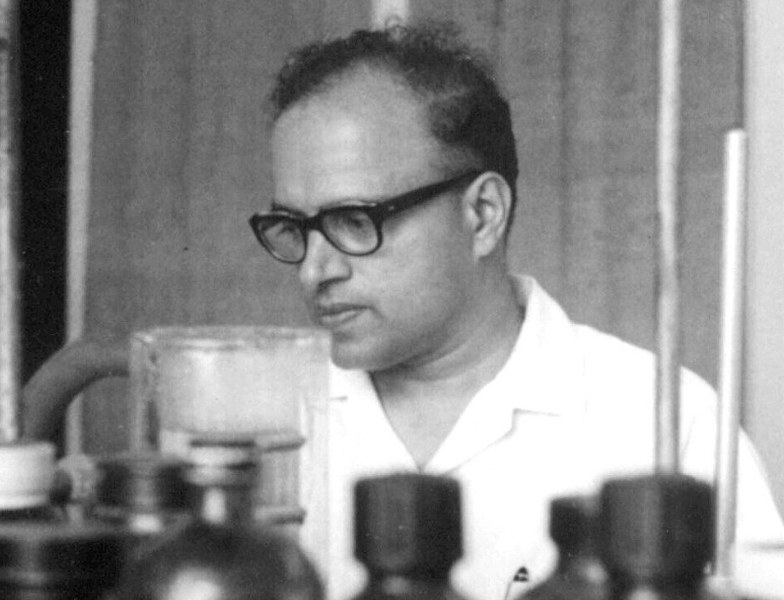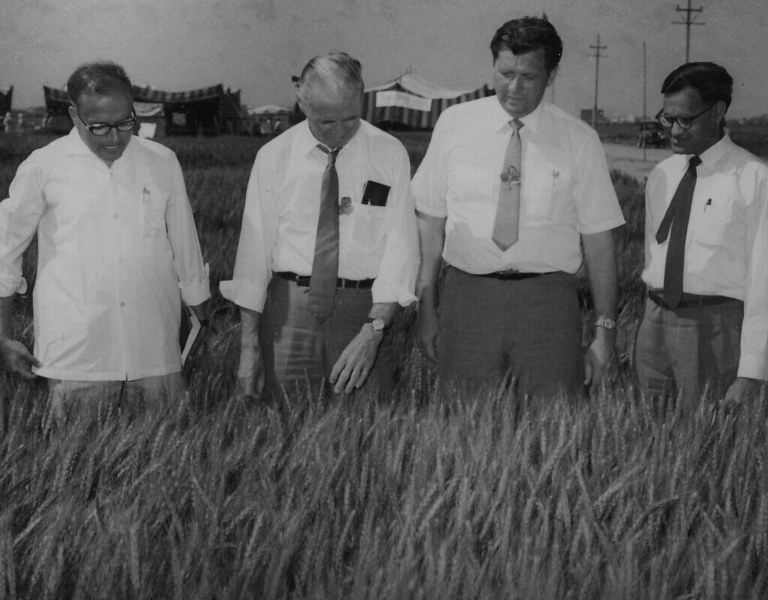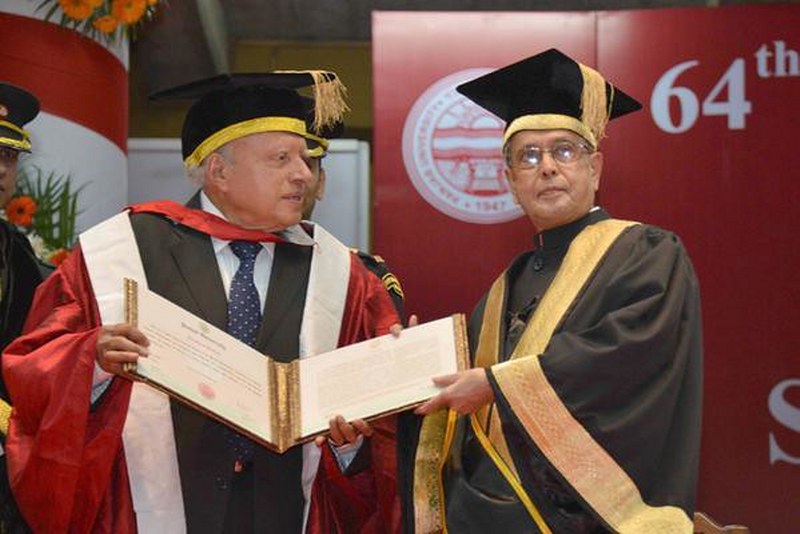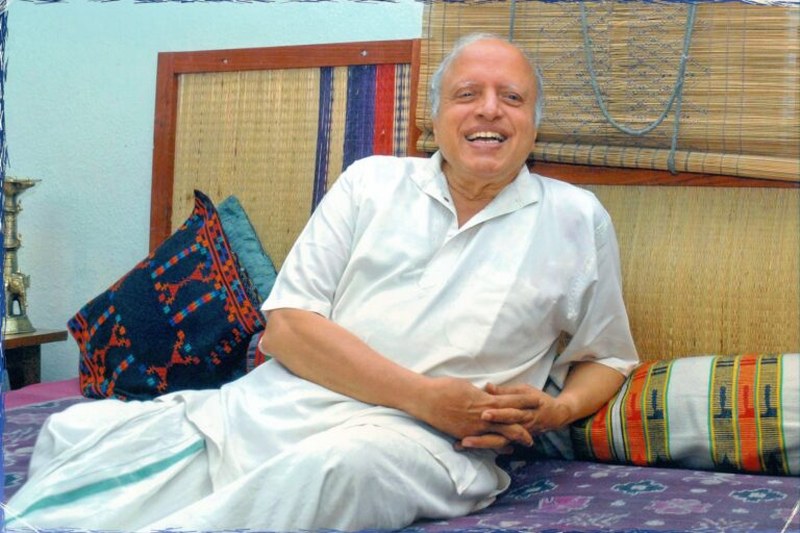
Tribute: Remembering M. S. Swaminathan
M.S. Swaminathan’s greatest strength was his ability to engage and connect with ease with everybody across board, from politicians to bureaucrats, academics, journalists, students and common people. Swaminathan’s primary contribution to the country was his work for the Green Revolution. The Green Revolution was a package that helped India overcome a crisis and was not a long-term sustainable solution. Swaminathan was aware of this and it is obvious from the research-for-development projects being implemented by the Foundation. Mongabay India Managing Editor writer S. Gopikrishna Warrier remembers him
Eminent agriculture scientist M.S. Swaminathan breathed his last on September 28. He celebrated his 98th birthday on August 7. Swaminathan had been keeping indifferent health for the past few years. His wife had predeceased him a few years ago.
Swaminathan’s primary contribution to the country was his work with Nobel Laureate Norman Borlaug to grow high-yielding varieties of rice and wheat, a phase in the country’s agricultural history which came to be known as India’s Green Revolution. The Green Revolution provided the Indian farmers a package of support and within years the country became food self-sufficient, from a food aid seeker.
In the 1960s, the new nation state was facing a severe food shortage, and was living on food aid from the U.S. under the PL480 scheme. The ignominy to the national pride and the political insecurity this created was immense. It is said that when India’s then agriculture minister C. Subramaniam went on a mission to request more foodgrains, he was humiliated in the U.S. He communicated this to the then prime minister, Indira Gandhi. She enquired if a technological answer to improve agricultural production and productivity was available, and Indian scientists answered in the affirmative. A political decision was made at the highest level to launch and support the Green Revolution.
 M.S. Swaminathan with Dr. Norman Borlaug. Photo by MSSRF/Flickr.
M.S. Swaminathan with Dr. Norman Borlaug. Photo by MSSRF/Flickr.
Swaminathan was associated with the Indian Council for Agricultural Research (ICAR) as a senior scientist and researcher, and later as its director general. In Mexico, Norman Borlaug had registered success with his work on developing high-yielding foodgrain varieties that responded well to external inputs and provided higher productivity and production. Swaminathan worked with Borlaug to adopt these technologies in India.
That was the beginning of the Green Revolution in the country.
Launched in the irrigated tracts, farmers were supplied with improved seeds, chemical fertilisers and pesticides, agricultural credit and marketing support.
The political implications of the resultant food self-sufficiency were immense. Much of Indian history starting from the 1970s, rode on the back of this freedom.
“I carry words of praise from him as a medal”
I have known M.S. Swaminathan from the time I moved to Chennai in 1992. The M.S. Swaminathan Research Foundation (MSSRF) had just moved into its own building. All through the 1990s Swaminathan organised multiple international conferences, where many eminent people from across the world participated. I was a young journalist with The Hindu Business Line and was assigned to cover these meetings. While I was expected to only cover the inaugural and the valedictory, I was excited to stay on and listen to the experts.I stayed right through some of these meetings, absorbing like a sponge. One day Swaminathan came to me and said, “Wish there are more journalists like you, Gopi!” I carry those words as a medal.
The 1990s were a heady period. Politically, it was a period of coalitions and there was much scope for public discussions.
India had signed the Climate Change Convention and the Biodiversity Convention enunciated at the Rio Summit of 1992. Almost immediately, the national government had rolled out the process to develop a Biodiversity Act. Swaminathan was appointed as the chair of the first committee to draft the legislation. Many of the meetings for this happened at the MSSRF.
Meanwhile, the World Trade Organisation Agreement came into place in 1994 and there was a labyrinth of agreements that people had to wrap their heads around. The controversies regarding genetically modified crops were spilling into India from Europe.
 M.S. Swaminathan receiving a national award from then-President, Pranab Mukherjee in 2015. Photo by MSSRF/Flickr.
M.S. Swaminathan receiving a national award from then-President, Pranab Mukherjee in 2015. Photo by MSSRF/Flickr.
Along with these discussions there were others that Swaminathan was personally interested in. They were about the ‘evergreen’ Revolution, the importance of millets and how to deal with chronic malnutrition.
The MSSRF became the hub of many of these discussions. Even a decade later, the discussions continued and scaled up when Swaminathan chaired the Farmers’ Commission.
Read more: Architect of India’s Green Revolution, agricultural scientist M.S. Swaminathan passes away
Linking with international research
When the international network of agricultural research organisations under the Consultative Group for International Agricultural Research (CGIAR) were scouting for locations to establish their research centres, India missed the bus and the International Rice Research Institute (IRRI) went to the Philippines. India particularly wanted IRRI since the country is one of the centres of origin for rice. Thus, when the proposal for the next CGIAR centre came, India responded with alacrity. Swaminathan chaired the committee that scouted for land for the International Crops Research Institute for the Semi-Arid Tropics (ICRISAT). In the early 1970s, the committee found land with naturally-occuring black and red soils outside Hyderabad for ICRISAT.
In the 1980s, Swaminathan became the director general of IRRI. There was a controversy that erupted which accused him of transferring Indian rice germplasm collected in the Regional Rice Research Institute at Raipur to IRRI as a quid pro quo for obtaining his position.
The accusation was wrong on two counts. One, Swaminathan would have been considered for the position even without the quid pro quo. Two, before the Convention on Biological Diversity of 1992, genetic wealth was considered part of global commons, and agricultural research grew based on such exchanges.
 M.S. Swaminathan in 2015. Photo by MSSRF/Flickr.
M.S. Swaminathan in 2015. Photo by MSSRF/Flickr.
The Green Revolution has its share of critics. And rightfully so – anything achieved should be open to criticism. For the Green Revolution, the governmental infrastructure took seeds of high yielding varieties, chemical fertilisers, pesticides, credit and extension services to farmers in the irrigated tracts – which in the 1960s covered one-third of India’s agricultural land. That meant that two-thirds was ignored. So if the violence of Punjab came from the irrigated tracts, the Maoist movement emerged from the rain-fed tracts. Also, all the chemical pollution of land and water bodies that happened in the decades following the GR.
However, all this fades before the ignominy India could have continued to face if it were still food insecure. Almost all that is done in the decades since the 1960s, including the Chandrayaan, is built on that freedom.
The Green Revolution was a package that helped India overcome a crisis. It was not a long-term sustainable solution. The fact that Swaminathan was aware of this is obvious from the many research-for-development projects being implemented by the Foundation.
In terms of awards, Swaminathan is the recipient of all the three Padma awards, the Ramon Magsaysay Award and the World Food Prize. He has also been on the listing for the Nobel Peace Prize.
For me personally, Swaminathan’s greatest strength was his ability to engage and connect with ease with everybody across board, from politicians to bureaucrats, academics, journalists, students and common people.
Support Our Journalism
We cannot do without you.. your contribution supports unbiased journalism
IBNS is not driven by any ism- not wokeism, not racism, not skewed secularism, not hyper right-wing or left liberal ideals, nor by any hardline religious beliefs or hyper nationalism. We want to serve you good old objective news, as they are. We do not judge or preach. We let people decide for themselves. We only try to present factual and well-sourced news.







